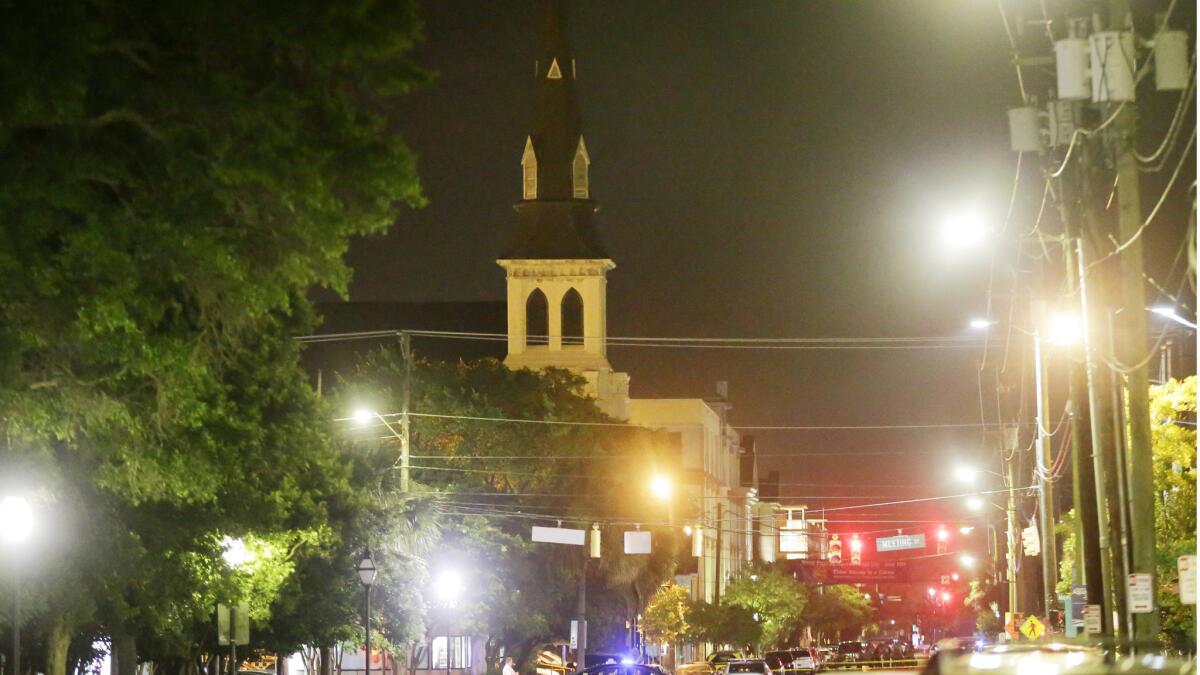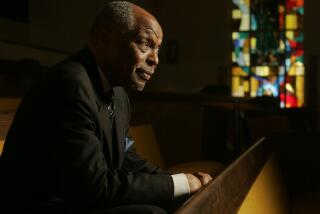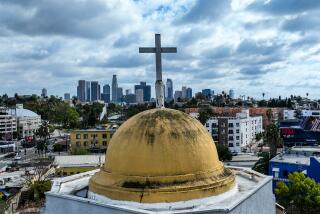Emanuel AME Church, now full of sorrow, was built on courageous past

This history of Emanuel AME Church on Calhoun Street in Charleston, S.C., is fraught with tumult.
- Share via
Since its founding nearly 200 years ago, members of Emanuel African Methodist Episcopal Church in Charleston, S.C., have seen their church burned to the ground, met in secret when all-black churches were outlawed and stood in the face of racial discrimination.
Now members are mourning the deaths of nine people, including their pastor. On Wednesday night, congregants were meeting for a Bible study session when a gunman, identified by authorities as Dylann Storm Roof, 21, of Columbia, S.C., opened fire, killing six women and three men.
One of the oldest AME churches in the South, “Mother Emanuel,” as it is affectionately known, was founded amid slavery in 1816 by former members of Charleston’s Methodist Episcopal Church who withdrew because of a dispute over burial grounds.
The Rev. Joseph A. Darby, a fourth-generation South Carolina minister, said Emanuel is the “mother church” of African Methodism in the southeastern United States.
RELATED: Charleston church shooting victims: Who they were
“If we had cathedral churches, it would be our cathedral church in South Carolina,” Darby told the Los Angeles Times on Thursday.
From its beginnings, the church was fraught with tumult.
In the 1820s, it was burned to the ground after an aborted slave uprising. One of the church’s founders, Denmark Vesey — raised as a slave in the Virgin Islands who was the personal servant to a Charleston-based slave trader — had organized the rebellion, but authorities found out about it before it could take place, according to the church’s website.
The planned rebellion “created mass hysteria throughout the Carolinas and the South,” the church said, leading to the burning. Vesey was put on trial, convicted and hanged along with other organizers of the rebellion.
South Carolinians believed that “black religion” was at the root of the uprising, and the state reacted by outlawing all-black services.
For years after the fire, the Charleston AME congregation met in secret to evade the ban on all-black services, according to the church. Members met underground until 1865, when the Civil War ended and the church was formally reorganized.
The congregation built a two-story wooden church on Calhoun Street, not far from Fort Sumter, where the first shots in the Civil War were fired. The building lasted 20 years before an earthquake in 1886 destroyed it.
Church members rebuilt it once more, this time in a stately, brick Gothic Revival style with a tall steeple, completed in 1891. Emanuel has retained its original altar, Communion rail, pews and light fixtures, according to the National Park Service.
The church has welcomed a long list of black leaders over the years, including Booker T. Washington and the Rev. Martin Luther King Jr. In 1969, Coretta Scott King led black hospital workers seeking better pay in a march from the church as a thousand state troopers and National Guardsmen looked on.
In 2014, the church raised more than $250,000 to renovate its historic building, according to NPR.
Times staff writer Matt Hamilton in Los Angeles contributed to this report.
More to Read
Sign up for Essential California
The most important California stories and recommendations in your inbox every morning.
You may occasionally receive promotional content from the Los Angeles Times.











